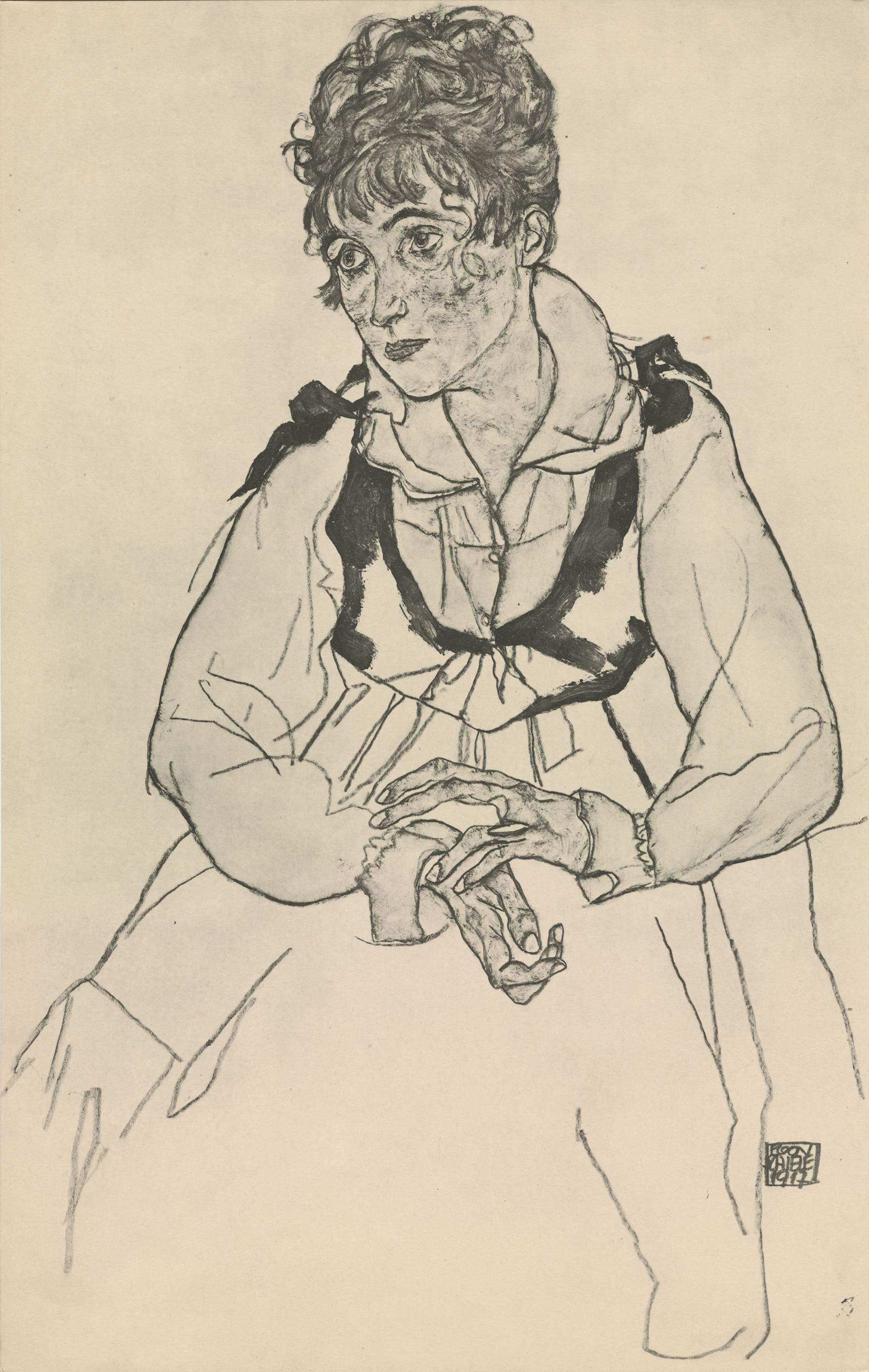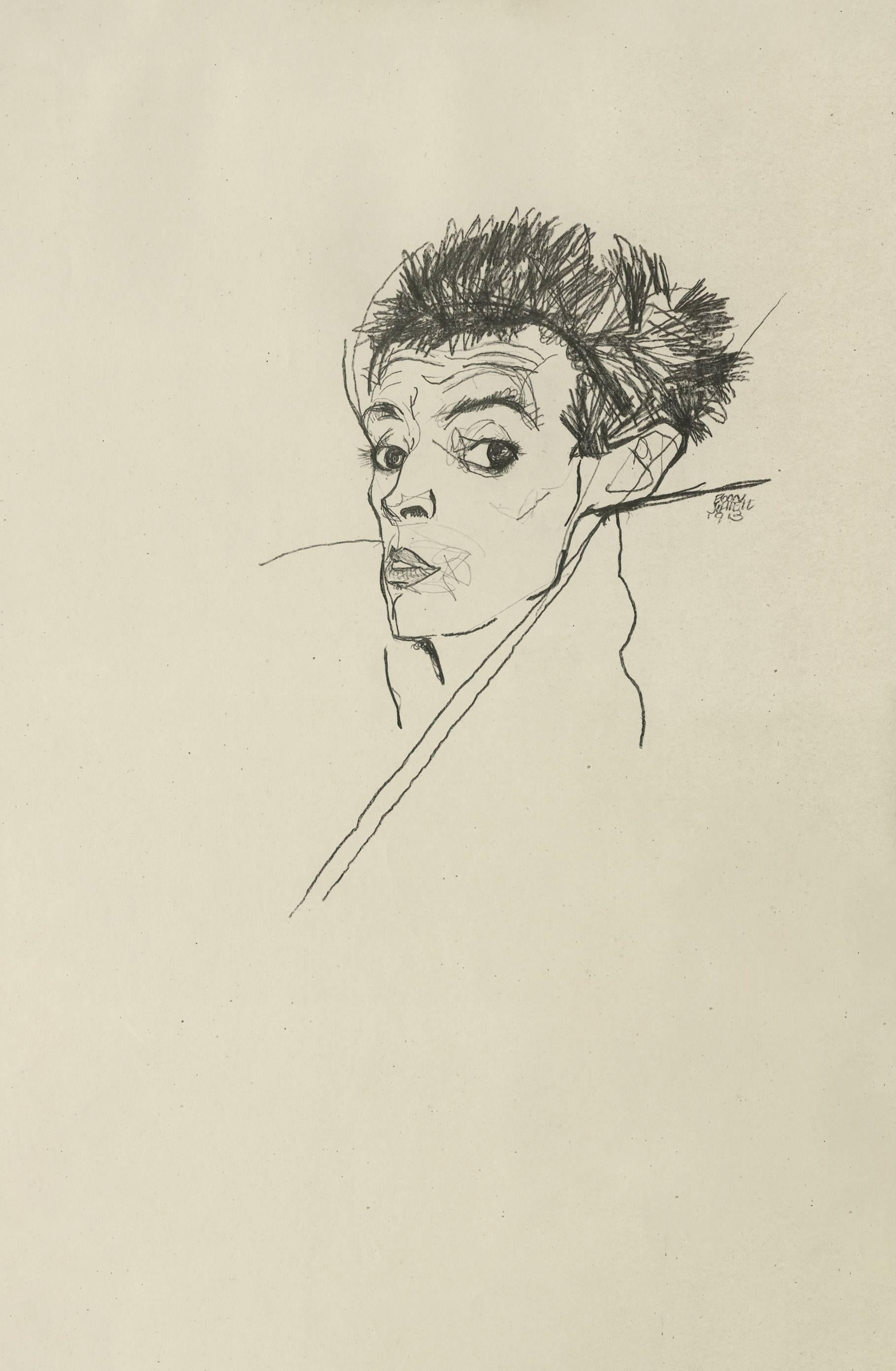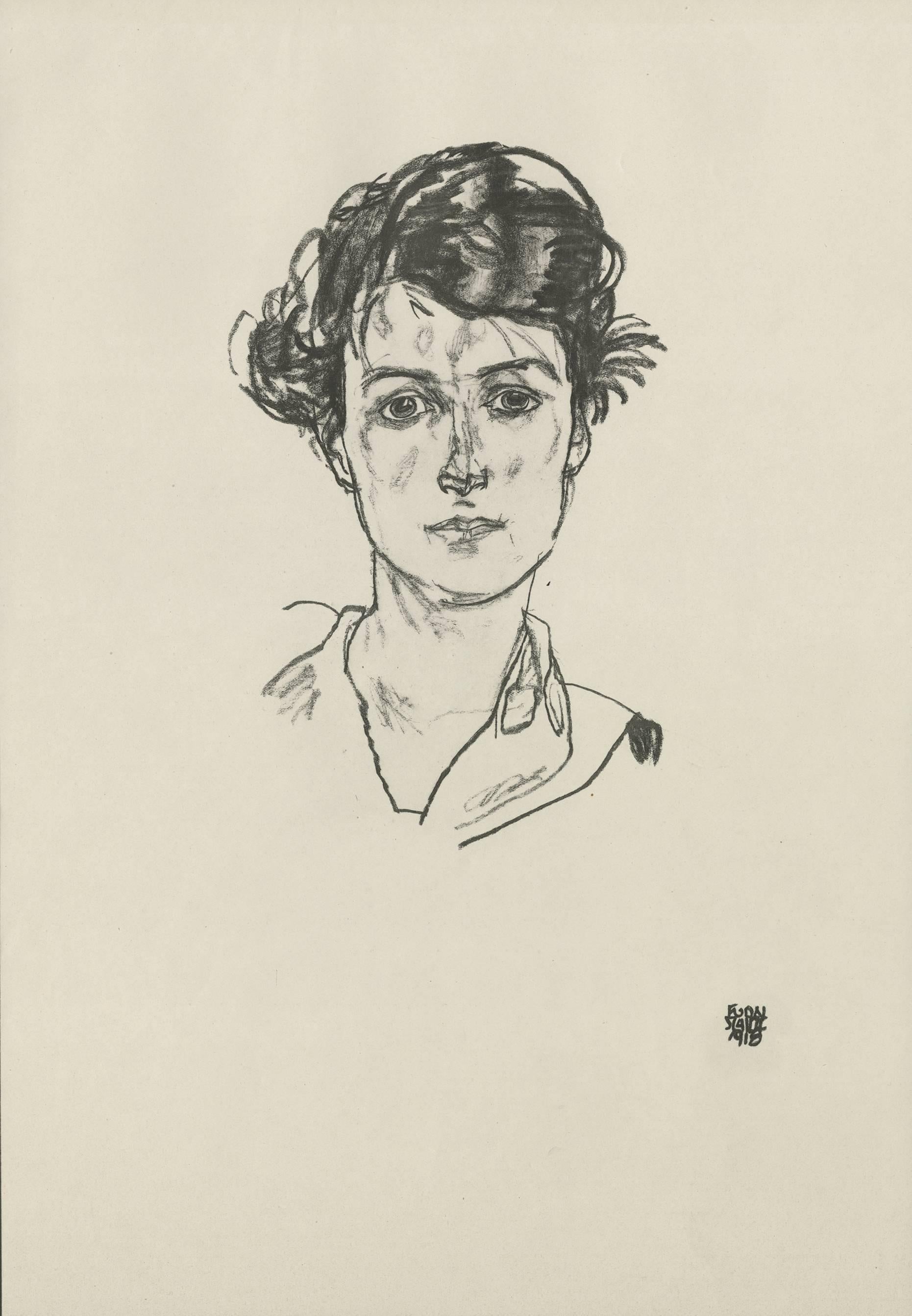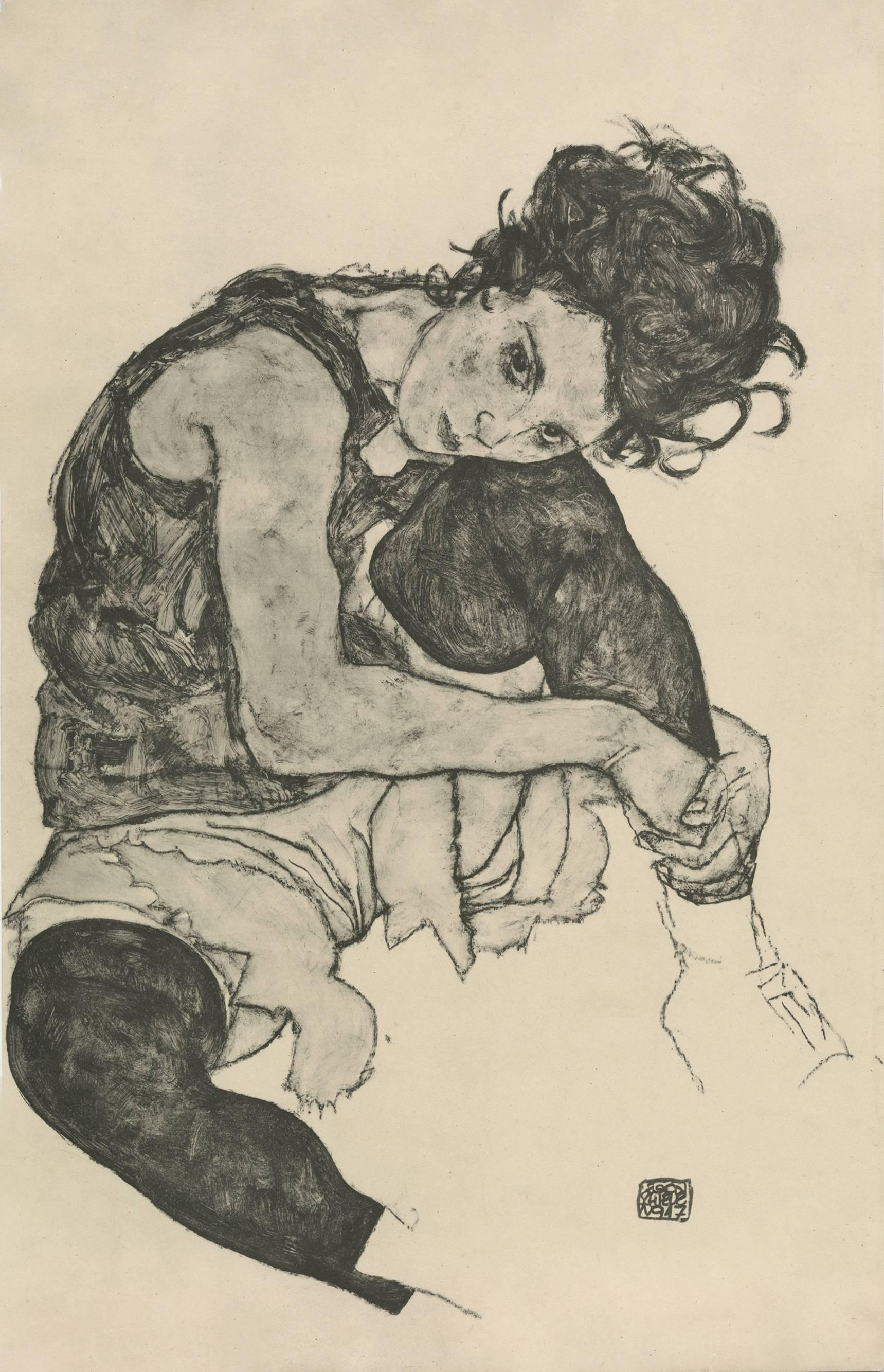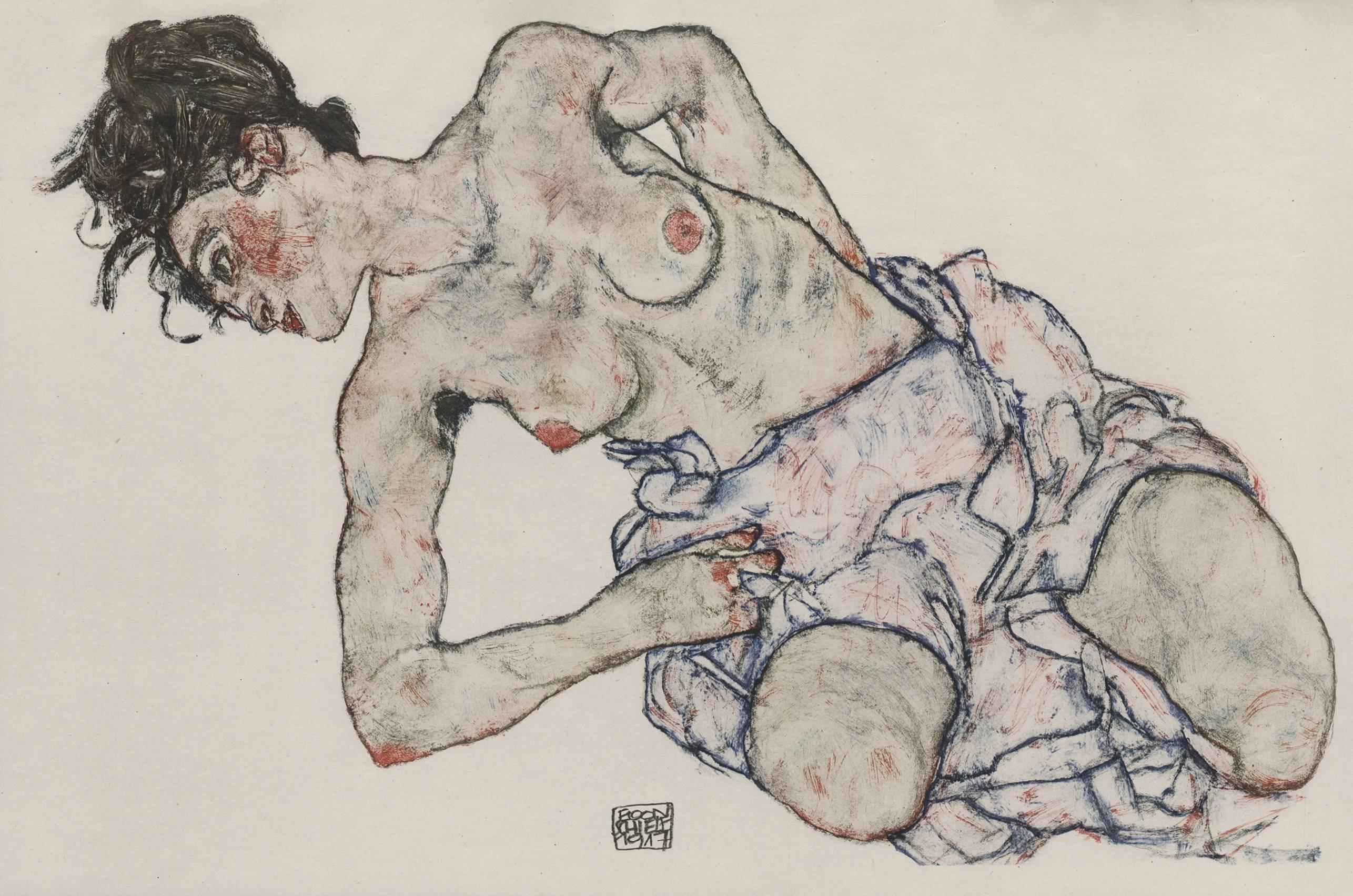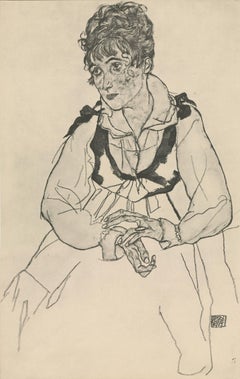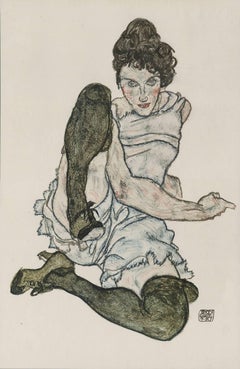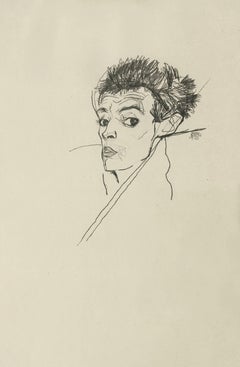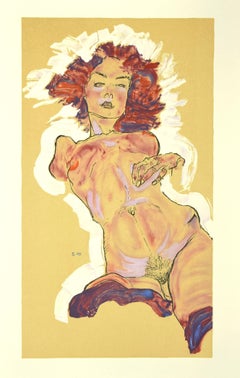Items Similar to E. Strache, Handzeichnungen folio, "Artist's Sister-in-Law" Collotype plate
Want more images or videos?
Request additional images or videos from the seller
1 of 6
(after) Egon SchieleE. Strache, Handzeichnungen folio, "Artist's Sister-in-Law" Collotype plate1920
1920
$14,500
£11,058.48
€12,742.25
CA$20,712.88
A$22,771.45
CHF 11,770.92
MX$272,474.96
NOK 148,605.17
SEK 139,321.50
DKK 95,166.26
About the Item
After Egon Schiele (1890 – 1918), AUSTRIA
“ART CANNOT BE MODERN, ART IS PRIMORDIALLY ETERNAL.” -SCHIELE
Defiantly iconoclastic in life and art, Egon Schiele is esteemed for his masterful draftsmanship and precocious insight into the human condition. Part of the first wave of Austrian Modernism, he was swept away by the Viennese fascination with the tension between Life and Death (known in the works of Freud and his later interpreters as Eros and Thanatos). Life, identified with attraction, love, sexuality, and reproduction, and Death, represented by distortion, disease, repulsion, and hysteria, often appeared in the same composition, thereby suggesting the frightening life cycle of the human mind and body.
Young throughout his career, Schiele universalized his childhood traumas, thriving libido, insecurities, fears, and longings. His contorted line, jarring contrasts, and flat areas of color, demonstrate an early alliance with Expressionist philosophy and artists who were relentlessly frustrated by conventionality in all its forms. Schiele’s work embodied man’s disorientation and confusion in a seemingly absurd world, a world plagued by disease and war. It continues to be astonishingly relevant today, not just because it helped define Modernism but also because it revealed the dark and immutable aspects of the human condition.
Handzeichnungen, is a fine art portfolio consisting of 15 collotype prints after original watercolors and drawings by Egon Schiele, four of which are in color. Published by Verlag Eduard Strache, Vienna, Prague, Leipzig, 1920, in an edition of 510: the first group numbered I - X were hand signed by Schiele and included an original drawing by Schiele. The art images were printed by Kunstanstalt Max Jaffe, Vienna; the portfolio with printed written pages was printed by Gesellschaft fur Graphische Industrie, Wien VI.
Although Egon Schiele’s Handzeichnungen portfolio was published posthumously in 1920, there is evidence that on the heels of his highly successful sold-out run number-ing 400 copies with his 1917 portfolio of monochromatic prints entitled Zeichnungen, Schiele was already planning a bigger and more elaborate follow-up upon his untimely death in 1918. The final print in Handzeichnungen features a stunning color print of a Kneeling Female (semi-nude) from the collection of Kunsthandlung Richard Lanyi. This same image was the seventh featured in Schiele’s Zeichnungen portfolio from 1917 published by Richard Lanyi. Clearly, Schiele’s first publisher approved of Handzeichnungen’s publication as he contributed one of the featured works. He also saw the opportunity to showcase Schiele’s work from what had been an entirely mono-chromatic collection of prints to an even more highly sophisticated portfolio including color collotype print work. A copy surely was to be found in his gallery/salon, a hot-bed of intelligentsia activity.
Posthumous printed portfolios such as Handzeichnungen are a continuation of the tradition Gustav Klimt and Egon Schiele helped to develop and popularize in Vienna during their lifetimes. Schiele's hand joined so many ways of seeing to capture the erotic, the intellectual, the esthetic. In the early years of 20th century Vienna, there was no clear separation between fine art, science, sociology and politics or philosophy; the cross-pollinating character of Viennese intellectual life was robust. Rather than cut-off and confined to the university, intellectual activity thrived in social spheres such as coffee houses and salons. Huge overlap existed among these inter-disciplinary circles. In a city numbering approximately 2 million, only a few hundred comprised the cultural and political elite. Schiele exhibited widely, helped to organize exhibitions and had earned such a following that upon the death of Gustav Klimt in February the year following Zeichnungen’s publication, Schiele had naturally taken up the torch as Klimt’s successor. As leader of the 49th Vienna Secession Exhibition in 1918, the responsibility to create an exhibition poster and art for the main gallery fell on Schiele’s shoulders. Critical accolades for his Expressionist work made certain Schiele’s leading position in the world of art. Shiele’s posthumously published portfolio is, no doubt, an art piece as well as a key into the intellectual circles which characterized early-20th century Vienna. Schiele’s portfolios were the very picture of Viennese life: they were collaborations between a fine artist; art collectors; art promotors; idea disseminators; scientists; and printers.
The collotype print form was at this time the preferred method of reproducing fine works of art. The printer of Schiele’s Zeichnungen and Handzeichnungen portfolios was Max Jaffe, a Viennese specialist in fine art collotypes. This dichromate-based photographic process had been invented in 1856 and predates lithography. The gelatin plates required delicate preparation involving light exposure, washing, and curing. They were inked with a velvet or leather roller and printed using a hand proof process with a light-pressured press. Collotype plates could not be re-used; the limited edition prints made from colloid inks were stable and posed no danger of fading like other photographic processes of the time. In fact, the fine reticulations created on the plates using the collotype process produced prints of extremely high quality. Lithography later replaced the collotype process which has now become nearly a lost art.
- Creator:(after) Egon Schiele (1890 - 1918, Austrian)
- Creation Year:1920
- Dimensions:Height: 18.75 in (47.63 cm)Width: 11.5 in (29.21 cm)
- Medium:
- Movement & Style:
- Period:
- Condition:Literature: see "Egon Schiele: The Complete Works" by Jane Kallir. 1990. Pg. 572 (#1912).
- Gallery Location:Chicago, IL
- Reference Number:1stDibs: LU46736447462
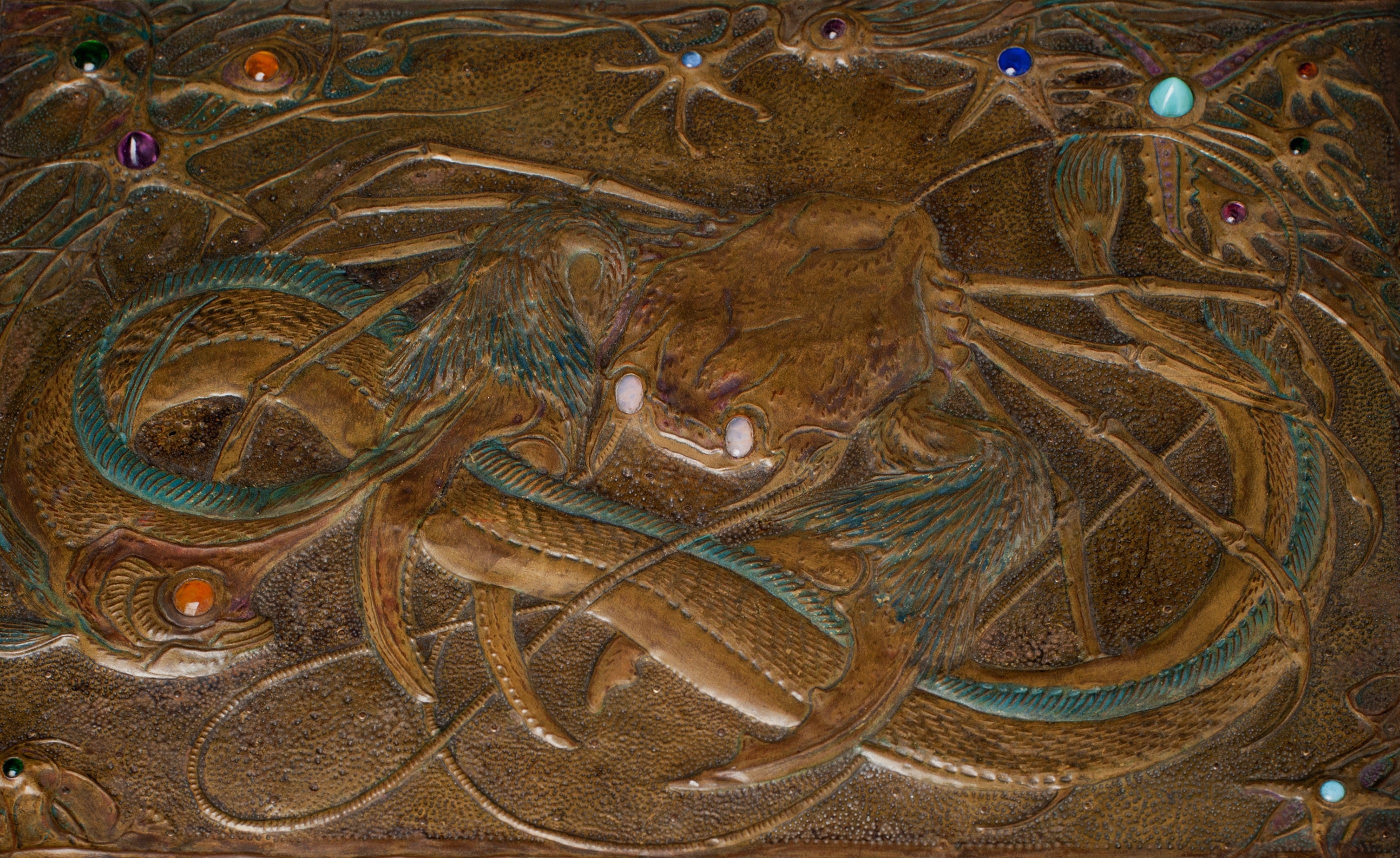
About the Seller
5.0
Gold Seller
Premium sellers maintaining a 4.3+ rating and 24-hour response times
Established in 2013
1stDibs seller since 2016
100 sales on 1stDibs
Typical response time: 4 hours
- ShippingRetrieving quote...Shipping from: Chicago, IL
- Return Policy
Authenticity Guarantee
In the unlikely event there’s an issue with an item’s authenticity, contact us within 1 year for a full refund. DetailsMoney-Back Guarantee
If your item is not as described, is damaged in transit, or does not arrive, contact us within 7 days for a full refund. Details24-Hour Cancellation
You have a 24-hour grace period in which to reconsider your purchase, with no questions asked.Vetted Professional Sellers
Our world-class sellers must adhere to strict standards for service and quality, maintaining the integrity of our listings.Price-Match Guarantee
If you find that a seller listed the same item for a lower price elsewhere, we’ll match it.Trusted Global Delivery
Our best-in-class carrier network provides specialized shipping options worldwide, including custom delivery.More From This Seller
View AllR. Layni, Zeichnungen folio, "The Artist's Wife, Seated" Collotype plate VI
Located in Chicago, IL
Egon Schiele (1890 – 1918), AUSTRIA
“ART CANNOT BE MODERN, ART IS PRIMORDIALLY ETERNAL.” -SCHIELE
Defiantly iconoclastic in life and art, Egon Schiele is esteemed for his masterfu...
Category
1910s Vienna Secession Portrait Prints
Materials
Paper
E. Strache, Handzeichnungen folio, "Female Model, Seated" Collotype plate
By (after) Egon Schiele
Located in Chicago, IL
After Egon Schiele (1890 – 1918), AUSTRIA
“ART CANNOT BE MODERN, ART IS PRIMORDIALLY ETERNAL.” -SCHIELE
Defiantly iconoclastic in life and art, Egon Schiele is esteemed for his mas...
Category
1920s Vienna Secession Figurative Prints
Materials
Paper
E. Strache, Handzeichnungen folio, "Self-Portrait" Collotype plate
By (after) Egon Schiele
Located in Chicago, IL
after Egon Schiele (1890 – 1918), AUSTRIA
“ART CANNOT BE MODERN, ART IS PRIMORDIALLY ETERNAL.” -SCHIELE
Defiantly iconoclastic in life and art, Egon Schiele is esteemed for his mas...
Category
1920s Vienna Secession Portrait Prints
Materials
Paper
E. Strache, Handzeichnungen folio, "Portrait Study (Head of a Girl)" Collotype
By (after) Egon Schiele
Located in Chicago, IL
after Egon Schiele (1890 – 1918), AUSTRIA
“ART CANNOT BE MODERN, ART IS PRIMORDIALLY ETERNAL.” -SCHIELE
Defiantly iconoclastic in life and art, Egon Schiele is esteemed for his mas...
Category
1920s Vienna Secession Portrait Prints
Materials
Paper
R. Layni, Zeichnungen folio, "Seated Woman with Bent Knee" Collotype plate I
Located in Chicago, IL
After Egon Schiele (1890 – 1918), AUSTRIA
“ART CANNOT BE MODERN, ART IS PRIMORDIALLY ETERNAL.” -SCHIELE
Defiantly iconoclastic in life and art, Egon Schiele is esteemed for his mas...
Category
1910s Vienna Secession Figurative Prints
Materials
Paper
E. Strache, Handzeichnungen folio, "Kneeling Female, Semi-Nude" Collotype plate
By (after) Egon Schiele
Located in Chicago, IL
after Egon Schiele (1890 – 1918), AUSTRIA
“ART CANNOT BE MODERN, ART IS PRIMORDIALLY ETERNAL.” -SCHIELE
Defiantly iconoclastic in life and art, Egon Schiele is esteemed for his mas...
Category
1920s Vienna Secession Figurative Prints
Materials
Paper
You May Also Like
Weiblicher Rückenakt - Original Lithograph after Egon Schiele
By (after) Egon Schiele
Located in Roma, IT
This lithograph from the portfolio "Egon Schiele" is a reproduction of "Weiblicher Rückenackt", an original artwork realized by Egon Schiele in 1917. The portfolio, that includes 10 ...
Category
1910s Modern Nude Prints
Materials
Lithograph
Mädchen mit grünem Rock - Original Lithograph After E. Schiele
By (after) Egon Schiele
Located in Roma, IT
This lithograph from the portfolio "Egon Schiele" is a reproduction of "Mädchen mit grünem Rock", an original artwork realized by Egon Schiele in 1910.
The portfolio, that includes...
Category
1910s Modern Figurative Prints
Materials
Lithograph
The Lady with Red Hair - Lithograph
By (after) Egon Schiele
Located in Paris, IDF
Egon SCHIELE (after)
The lady with red hair
Lithograph
Printed monogram signature in the plate
On paper 50 x 32 cm (c. 19.7 x 12.6 inches)
Excell...
Category
Late 20th Century Modern Figurative Prints
Materials
Lithograph
Female Nude - 2000s - Original Lithograph After E. Schiele
By (after) Egon Schiele
Located in Roma, IT
Female Nude is an original colored lithograph from the portfolio "Erotica" by Egon Schiele.
It deals with a reproduction of the homonym artwork realized in gouache, watercolor, and ...
Category
Early 2000s Modern Nude Prints
Materials
Lithograph
A La Maniere de Schiele, Expressionist Lithograph by David Stein
By David Stein (artist)
Located in Long Island City, NY
Infamous art forger David Stein was implicated multiple times for selling faked works of art by renowned artists. In his later years, in order to avoid further lawsuits, he began tit...
Category
1970s Figurative Prints
Materials
Lithograph
Edith Schiele mit Hund Lord - Original Lithograph after Egon Schiele - 1990
By Egon Schiele
Located in Roma, IT
This lithograph from the portfolio "Egon Schiele" is a reproduction of "Edith Schiele mit Hund Lord", an original artwork realized by Egon Schiele in 1917. The portfolio, that includ...
Category
Early 2000s Modern Figurative Prints
Materials
Lithograph
More Ways To Browse
Antique Law
Vienna Art Plate
Kneeling Nude
Reiss Studio
Riccardo Tommasi Ferroni On Sale
Robert Heindel
Roberto Matta Erotic
Robin Tanner On Sale
Rolex Radium Dial
Rolf Weijburg
Roy Lichtenstein Hopeless
Roy Lichtenstein Pyramids
Ruth Starr Rose
Ryan Hewett
S L Margolies
Salvador Dali Bull
Salvador Dali Fallen Angel
Salvador Dali Fashion Designer
